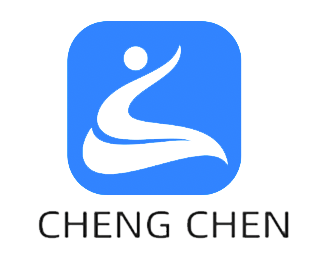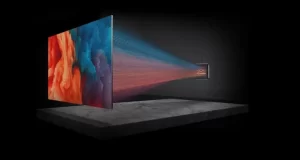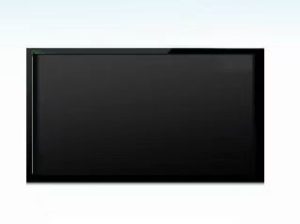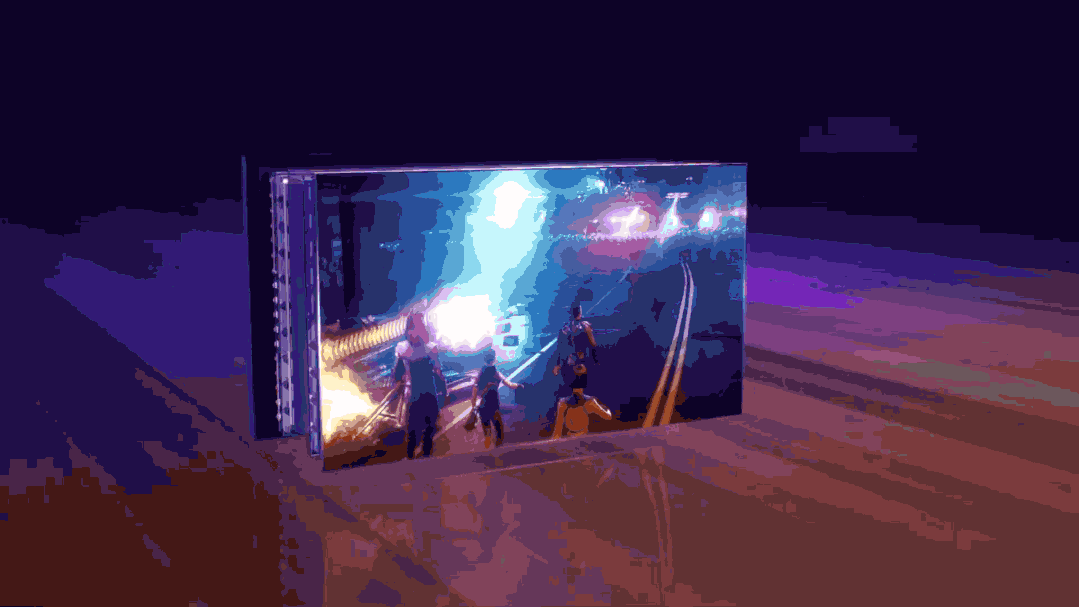
TN screen, VA and IPS screen, what is the difference between these three LCD panels? Which LCD screen is better?
I believe that many LCD terminal manufacturers, in the purchase of LCD module, always around some parameters: size, screen proportion, color gamut, refresh rate, brightness……… There is one more important parameter: the panel type. More common are: TN, VA, IPS these three kinds of LCD panels.
LCD panel is the most important part of the display, consumers buy the display is to buy the panel, the panel is the soul of a display. Therefore, the display terminal will be carefully selected on the panel. This article takes you to understand the LCD panel types, to help you better understand the differences and advantages and disadvantages of TN, VA, IPS panels.
At present, display panels on the market are derived from three categories of TN, VA, and IPS panels according to the different layout modes of the liquid crystal, forming three mainstream panels on the market.
The LCD panel of a display is composed of many layers, including a backlight layer, a polarizing filter and a liquid crystal layer. It is this liquid crystal layer that determines the intensity of the light coming out of the backlight, as well as the color of the light, whether it is red, green or blue. To control this strength, a voltage is applied to the liquid crystal to move it from one position to another. How these crystals are arranged, and how they move when a voltage is applied, is the fundamental difference between TN, VA, and IPS.
The working principle of the liquid crystal panel, the process marked by the three arrows on the right is the action of the change of the liquid crystal arrangement
The following details the three panels and their advantages and disadvantages.
First, TN screen: fast response, the first choice for esports players
TN panel display TN (Twisted Nematic) twisted nematic panel, a soft screen, the use of fingers gently press water ripples, is one of the earlier use of LCD panels, due to low production costs make TN become the most widely used entry-level LCD panel.
The biggest performance advantage of the TN screen is the extremely fast response speed, through the fast response, the TN screen can lossless present the high-speed changing scene details, this material screen is usually used as a professional esports screen.
The defect of the TN panel is that the screen color is white, the viewing Angle is small, the display effect is general, and the color and brightness differences will appear when viewed from different angles. Therefore, if consumers are engaged in design, post-film and television related work or have high requirements for screen color when watching entertainment, it is not recommended to use this screen. Therefore, this screen is mainly used for game players, and is not suitable for daily, video and audio use.
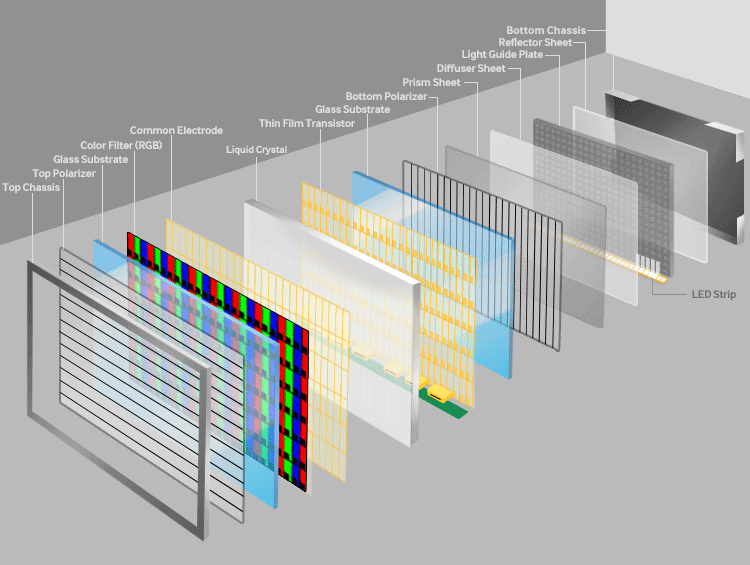
Second, VA screen: high contrast, a good helper for audio and video entertainment
VA (vertical alignment) A vertical alignment panel. A VA panel is also a soft screen. When you touch the panel with your finger, the VA panel displays a quince pattern.
VA screen and IPS are the same as the wide-angle panel, there is an advantage is high tolerance and contrast, many IPS panel static contrast is only 1000:1, while VA screen can easily do 3000:1.
VA screen is also a good feature is flexible. The physical characteristics of VA determine that it is easier to make a curved display than IPS, of course, can not be compared with OLED. So the VA panel is mainly used for curved screens.
The advantage of the VA panel is that it has a high contrast ratio, which is the highest of these three panels. Black is more pure, the picture layer is stronger, the light leakage situation is basically no, suitable for daily, video and audio use.
The VA disadvantage is that the response time is slightly poor, and there may be some dragging when playing FPS games.
The VA screen is mainly for users who like large screens and audio and video.
Third, IPS screen: good color, professional film and television workers must
In-Plane Switching (IPS) is the most popular type of panel. Whether it is a laptop or a monitor or even some mobile phone screens are equipped, mainly for hard screens.
The screen of the IPS panel is relatively “hard”, and it is not easy to deform the water pattern by gently paddled by the hand, so it is also known as the hard screen.
The hard screen completely eliminates the fuzzy and water pattern diffusion phenomenon of the traditional LCD screen when it is subjected to external pressure and shaking, and the residual shadow and tailing are eliminated when playing the high-speed picture. Therefore, the IPS hard screen is used for the aerospace, automobile, subway and other industries that are always in motion to obtain the picture quality without loss.
The IPS screen can be said to be an upgraded version of the TN screen, which is the preferred panel of many manufacturers, that is, the electric field direction of the control liquid crystal is converted from the original longitudinal to horizontal, so that the liquid crystal molecules are parallel to the screen regardless of whether it is powered or not, and the structure is optimized, and finally the visibility of the screen reaches 178°.
TN compared with IPS visual Angle
The advantage of IPS panel is that its picture color is strong and the visibility is wide, so it is a good choice for daily or image work. The disadvantage is that there will be light leakage phenomenon, even if the price of 4K will also appear this problem. It will only be visible on a pure black screen, so as long as the light leakage is not too severe.
IPS subdivision also has S-IPS, H-IPS, E-IPS and so on, so some IPS panels sell very cheap is also need to understand which type, their ranking is P-IPS>H-IPS>S-IPS>AH-IPS>E-IPS, the lower the panel is worse.
IPS panel response time has always been slightly slower than TN, in order to improve the launch of Nano-IPS, Fast-IPS panel, response time has been greatly improved, many displays with these two panels reached 1ms(GTG), note that GTG is the standard statement, Many monitors below 3k like to mark 1ms response time but behind it is marked VRB, MPRT, which is achieved through technology to reduce picture quality blur, basically no reference significance, turn back to GTG is also about 4-5ms.
IPS panel, the current mainstream is Fast-IPS and Nano-IPS.
Fast-fast in IPS means Fast response. The emergence of FAST IPS (fast LCD screen) really fundamentally solves the problem of dragging, and compresses the response time to 1ms, which is undoubtedly good news for players who have the pursuit of game experience.
The principle of this technology is to cover the surface of the light-emitting components with a layer of nanofilm to absorb excess ineffective light waves, and the response speed is basically the same as that of the TN screen.
The IPS panel with color as the advantage, and the dragging problem has been solved, and now FAST IPS,
I like to call it:
N(new)B(beauty) screen
Nano-IPS is LG’s technology, although the contrast is reduced compared to the traditional IPS, but the screen permeability and color are more excellent, which is the ceiling panel in the current IPS.
In general, the emergence of Nano-IPS and Fast-IPS improves the shortcomings of the previous IPS panel’s insufficient response time, and continues the advantages of the IPS panel’s good color, accurate color, and large viewing Angle, and is relatively versatile.
In almost all game type or design type LCD displays, most of them are IPS panels.
Application scenario: Game, design, LCD TV
Four, TN, VA, IPS three panel summary
To summarize, when the price is close, the relationship between the three panels is as follows:
Response speed: TN>IPS>VA
Color accuracy: IPS>VA>TN
Viewing Angle: IPS>VA>TN
Static comparison: VA>IPS>TN
TN panel
Advantages: Fastest response time, no light leakage.
Disadvantages: low color, poor static contrast, small viewing Angle.
VA panel
Advantages: best static contrast, good color, normal viewing Angle, no light leakage.
Cons: Slow response time.
IPS panel
Advantages: Best color, large viewing Angle, static contrast center, normal response time.
Disadvantages: light leakage is more serious.
△ Comprehensive comparison of three panels
Five, which LCD screen is better?
Here’s your advice:
If the end customer is an ordinary user’s daily office and movie-watching entertainment, there is no problem in choosing the IPS panel, the color performance is real, the viewing Angle is large, the current price is suitable, and the cost performance is high;
If the end customer is a pure game enthusiast, and most of them are FPS type games, there is a demand for screen response time, TN panel is optional, it has the lowest price at the same level, but if it is daily use, not recommended;
If end customers want to experience novel screen forms, such as curved screen, fish screen, etc., optional VA panel, the price is lower than IPS panel, and the contrast is better.
If it is not for the display of heavy FPS player consumers, or the pursuit of curved surfaces and other needs, it is recommended that the terminal business preference IPS panel. chchstar as the LCD module source manufacturer, LCD module screens are IPS panels.
In addition, it should be noted that the display can not look at the panel alone, because we also have other needs, such as want to anti-reflective can choose fog screen, want to transparent select mirror screen.
For example, the choice of backlight, but also pay attention to interface specifications, as well as gamut coverage, gamut switching, color indicators, etc., you can see the previous articles published by chchstar are introduced.
In simple terms, when the terminal agrees on the LCD module, first look at the panel, then look at the size, then look at the screen resolution, refresh rate, color gamut coverage and other related parameters, which is the basic idea of customizing the LCD module.
